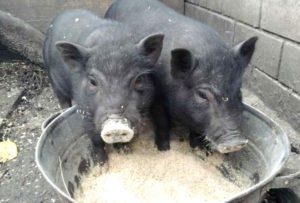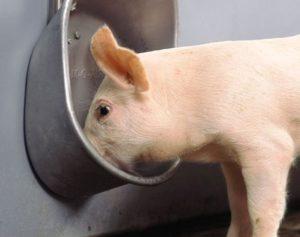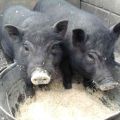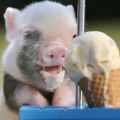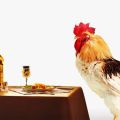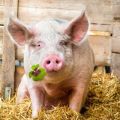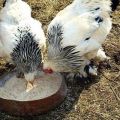How to feed a sow after farrowing at home so that there is more milk
The development of not only the animal, but also future piglets depends on the characteristics of feeding the sow. The type of diet also affects the ability of an adult to bear offspring. Several factors determine what a sow can be fed after farrowing at home. It should be borne in mind that during this period the animal's diet is doubled.
Factors on which feed rates depend
Feed rates are determined by the following factors:
- total weight of the pig;
- the age of the animal;
- the amount of body fat;
- the current period of the productive phase.
Sows under two years of age are considered growing. That is, during this period, it is recommended to give feed that is supposed to be for young animals.
There are three periods of the productive phase:
- Fertilization (lasts at least five days). This period is defined as the period from weaning of piglets to the next successful conception.
- Pregnancy (from fertilization to day 115).
- Lactation (lasts about 28 days). The period is defined as the time interval between farrowing and weaning of piglets from the sow.
Each period of the productive phase is characterized by its own characteristics that determine the nature of feeding.
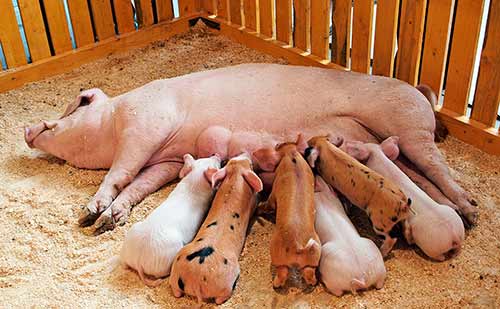
Feeding types
For sows, 2 types of feeding are used: combined feed and combined. The first is recommended for large livestock farms with large livestock.
In this case, the sows are given full-value compound feed, each of which corresponds to the current period of the productive phase, and plenty of drinking.
According to the second option, dairy products, food waste, hay (green grass) and cereals are introduced into the diet of animals. In addition, sows on combined feeding are given BMVD, which enrich the food with vitamins.
How to feed sows at different times
On average, the production phase of sows lasts 148 days. That is, during this period, it is necessary to take into account the recommendations for drawing up a diet.
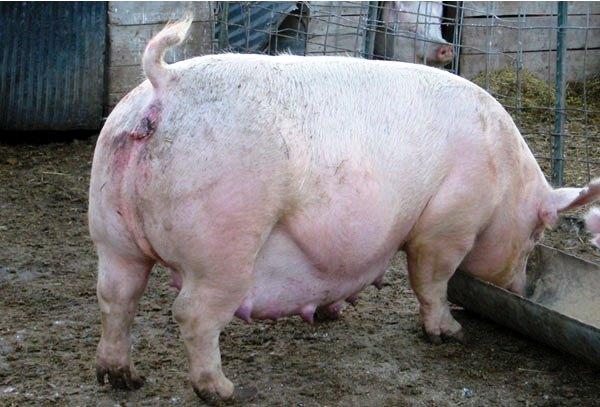
Fertilization period
In the absence of diseases during this period, the amount of feed given out is not reduced. This is explained by the fact that after the end of lactation, the sow is ready for fertilization 5 days after weaning the piglets. If necessary, the amount of feed given to the animal is increased to 4-5 kilograms per day. This type of diet increases the likelihood of successful conception. However, to do this, it is necessary to provide the right diet, providing sufficient amounts of nutrients and energy.
Before fertilization, sows are advised to give:
- root and tuber fruits or melons;
- hay flour;
- legume traps;
- dairy, meat and fish waste.
After fertilization, the amount of daily feed should not exceed 2.5 kilograms. If this indicator is exceeded, part of the embryos may die.
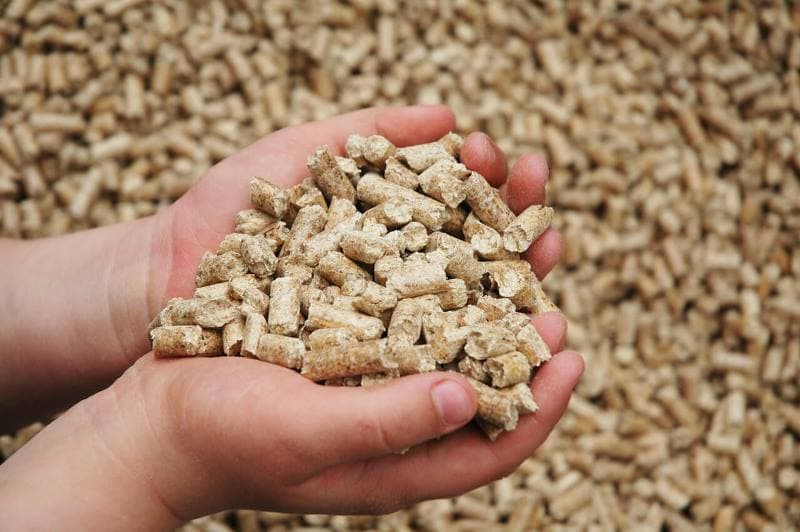
Pregnancy period
This period is divided into low and high fertility. The first one ends at 12 weeks and is characterized by the fact that sows need moderate feeding. At this stage of the development of pregnancy, the needs of the body of an adult animal do not differ from those that were before fertilization. However, it is recommended to include foods rich in fiber in the diet. Such food provides a feeling of fullness.
Highly fertile sows up to 16 weeks require large amounts of feed. This is due to the fact that at this stage the embryos reach large sizes. Therefore, the pig's body consumes more nutrients and vitamins for the development of future piglets.
Highly fertile animals are fed:
- crushed grain mixture (up to 60% of the diet);
- fresh vegetables (30%);
- grass or hay (10%);
- dairy products or cake.

Closer to childbirth, it is recommended to double the proportion of highly nutritious feed, while reducing the amount of daily consumption. In the first weeks of pregnancy, pigs need to be given up to 10-12 liters of water, in the last - 12-15 liters. At this stage, pregnant animals gain 40 kilograms, and young (up to two years) - 0-30% less.
Lactation period
After birth, pigs need plenty of fluids. To quench its thirst, a voluminous trough with clean water is placed next to the animal. Also, some farmers dilute sugar or glucose in liquid (one tablespoon per liter), since these substances help to restore strength faster.
For the first time, you can feed animals after giving birth after 6-8 hours, giving out a liquid mixture of crushed oats and bran with a volume of no more than two liters. In the future, you need to gradually increase the amount of food. Lactating pigs should be given 2-3 times more feed than during pregnancy. During this period, it is recommended to introduce:
- products containing fiber (up to 8% of the feed volume);
- feed oil (1-3%);
- fish meal (1-2%).
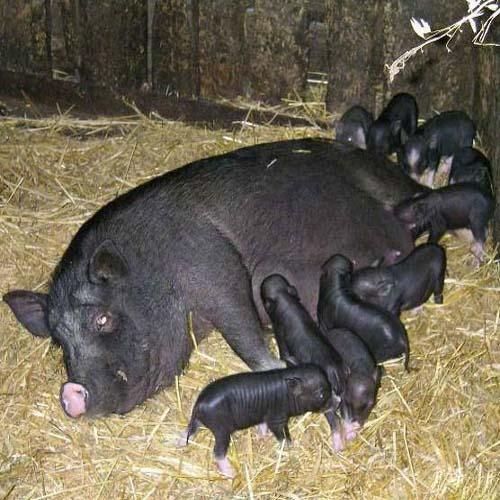
In order for the sow to produce more milk, it is recommended to use concentrates in combination with boiled potatoes or root vegetables. In the first days after farrowing, they give 2-4 kilograms of feed, then 3 kilograms. Starting from the second week, the pig switches to a nutritious diet. During this period, it is necessary to introduce into the diet of coarse, highly nutritious and juicy feed, which also enhances milk production.
To feed lactating animals, it is necessary to purchase compound feed with a high content of amino acids and minerals. This is due to the fact that during the production of milk, the body quickly loses fat and protein. It is equally important to provide the right living conditions for the sow. After farrowing, it is necessary to maintain the temperature at 18-20 degrees and feed, strictly observing hygiene standards.
